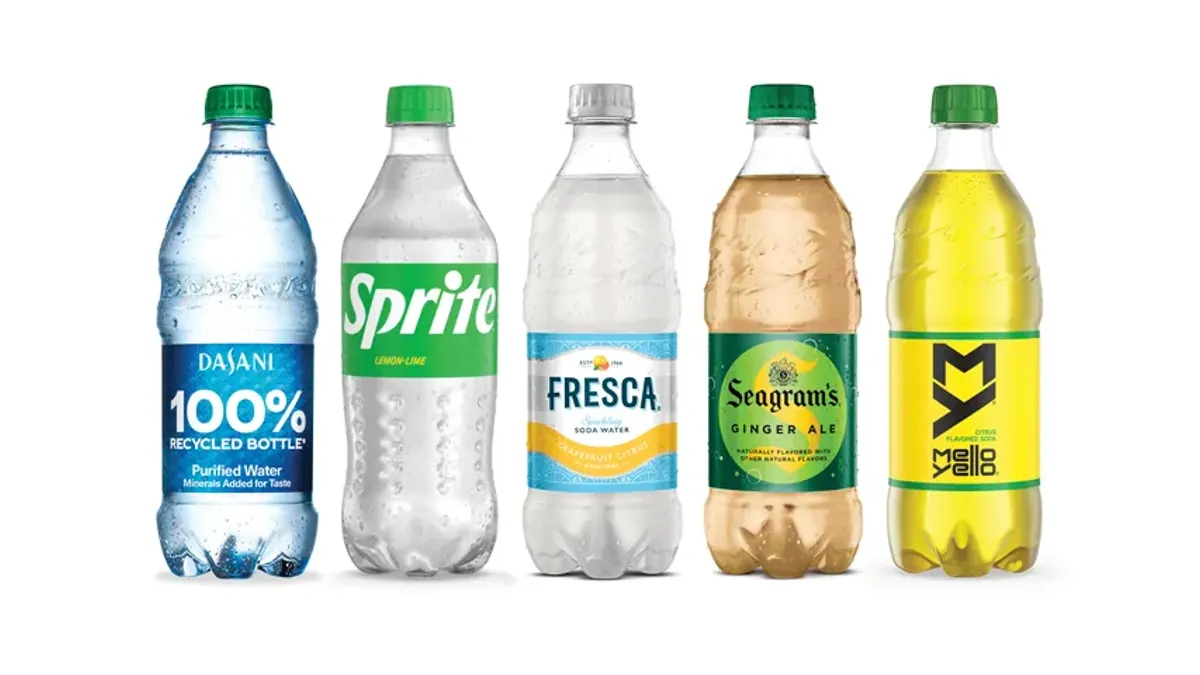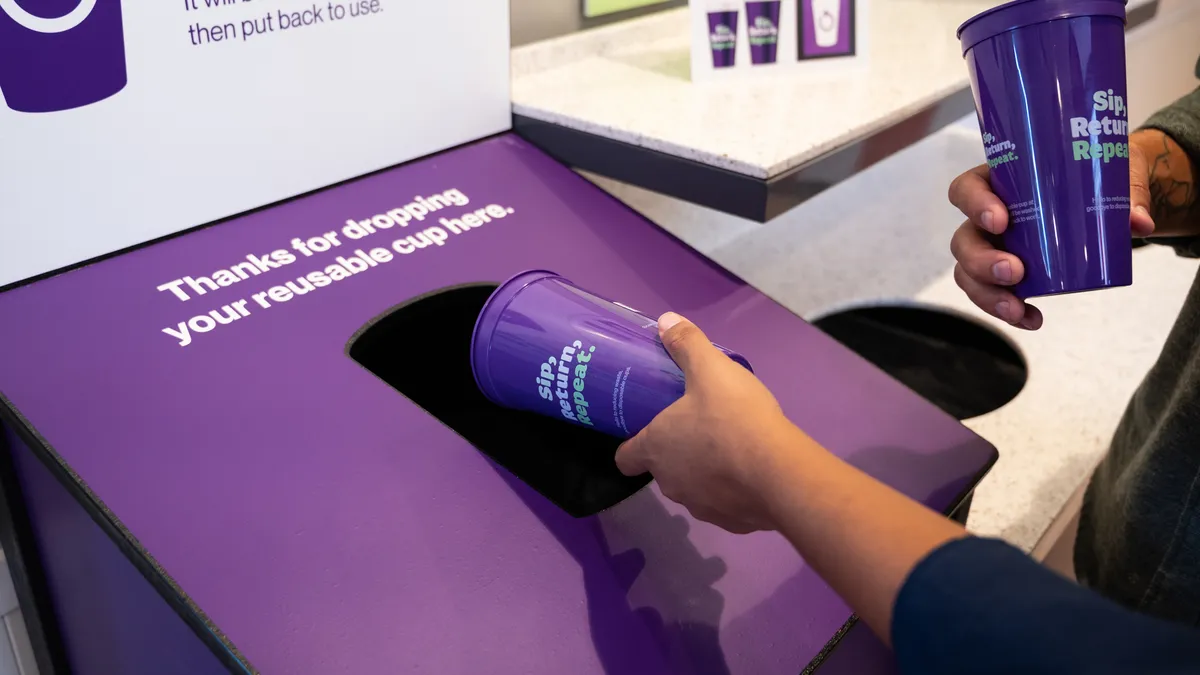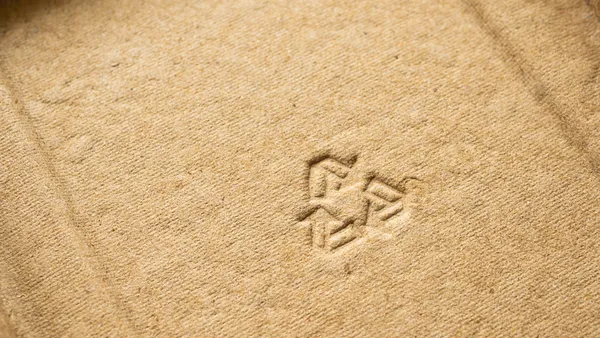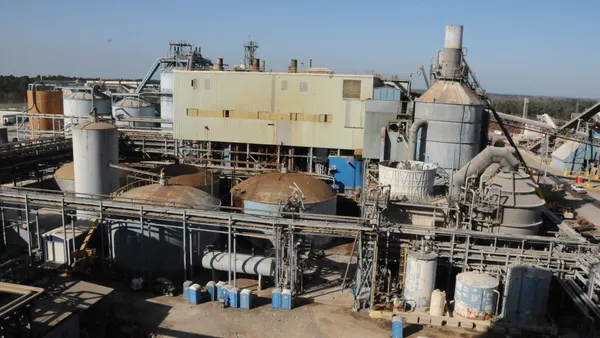Dive Brief:
- Coca-Cola announced Monday a limited rollout of 500mL Sprite and Sprite Zero “on-the-go bottles” without labels. Traditional wrap labels will be replaced by an embossed logo on the front, with laser-engraved product and nutritional information on the back.
- The company explained that while the beverages’ wrap labels don’t currently hinder recyclability, removing them means one less step of separation during the recycling process. Eliminating labels also decreases the amount of packaging material associated with each bottle, Coca-Cola said, as it works to slash 3 million metric tons of virgin plastic from non-renewable sources by 2025, from a 2020 baseline.
- The temporary trial will run between January and March 2024 at British supermarket Tesco Express in eight locations.
Dive Insight:
Worldwide, Coca-Cola aims to make all of its packaging recyclable by 2025; as of 2022 it was 90% of the way there. The company announced in 2022 it would change its famously green Sprite bottles to clear PET in North America, in a bid to increase their bottle-to-bottle circularity.
Coca-Cola’s Noah Wigington, global packaging development and innovation sustainability lead, explained at Pack Expo last year that the company’s consumer research during product testing indicated that the color change could confuse some consumers and hurt certain marketing aspects, but the company is confident that when it adequately communicates sustainability benefits to consumers, purchase intent increases.
Coca-Cola says the bottles, with the exception of their caps, are made entirely from recycled PET. The company says the drinks are identifiable by their green and transparent attached caps; Coca-Cola highlighted efforts to connect caps to bottles to decrease littering, along with lightweighting bottles to reduce material. EU countries will be required to comply with a tethered cap regulation come July 2024.
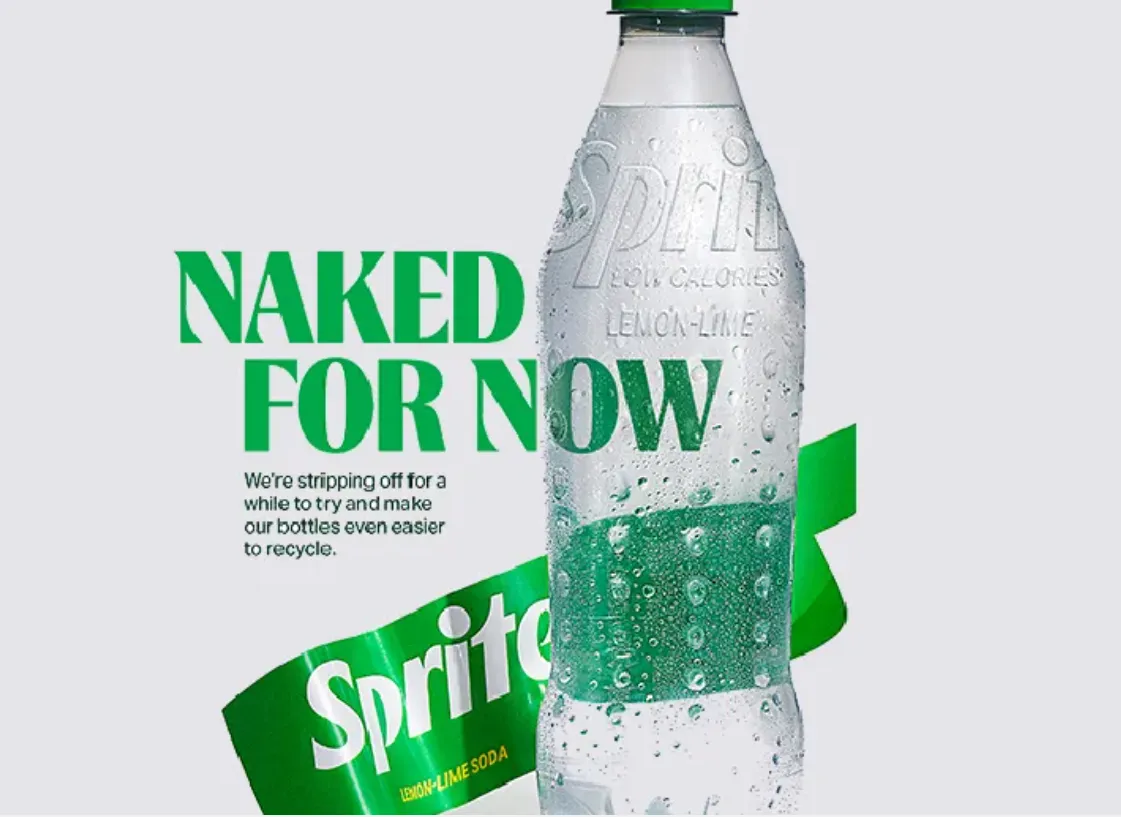
It’s not the first time Coca-Cola has introduced label-less bottles: Its 2022 sustainability report said label-less bottles with laser engraving were available across a range of brands in Japan, South Korea and China to improve recyclability and cut carbon emissions. But the company said the current British rollout is still unique, with label-less, single-unit bottles sold in store.
“Although the design change may sound simple, this is a big shift from a marketing perspective. This trial could contribute to longer-term changes to the way brands communicate with their consumers,” said Javier Meza, vice president of marketing for Coca-Cola Europe, in Monday’s announcement.
According to the UK Plastics Pact, other brands in the country have also tried removing labels. The group’s 2022-2023 report highlighted Danone removing PET labels from its Actimel yogurt drink concentrated shots and replacing them with embossed information, a move that will reportedly save an estimated 135 metric tons of plastic annually.
Another solution that brands like Heineken have turned to are wash-off or pressure-sensitive labels, designed to be easily peeled away when it’s time to separate labels during the recycling process. Yet another is digital watermarking; industry partners including Procter & Gamble, the European Brands Association and the Alliance to End Plastic Waste are collaborating through the HolyGrail 2.0 initiative to add watermarks to HDPE packaging designs so they can be identified by optical sorters at recycling facilities. The goal is to better track packaging through its life cycle and improve proper recycling.
Coca-Cola has a global goal to use at least 50% recycled material in its packaging by 2030. It also wants to “collect and recycle a bottle or can for each one we sell” by that same year. In 2022, Coca-Cola used 15% rPET in its bottles and collected 61% of the equivalent bottles and cans it put into circulation.



